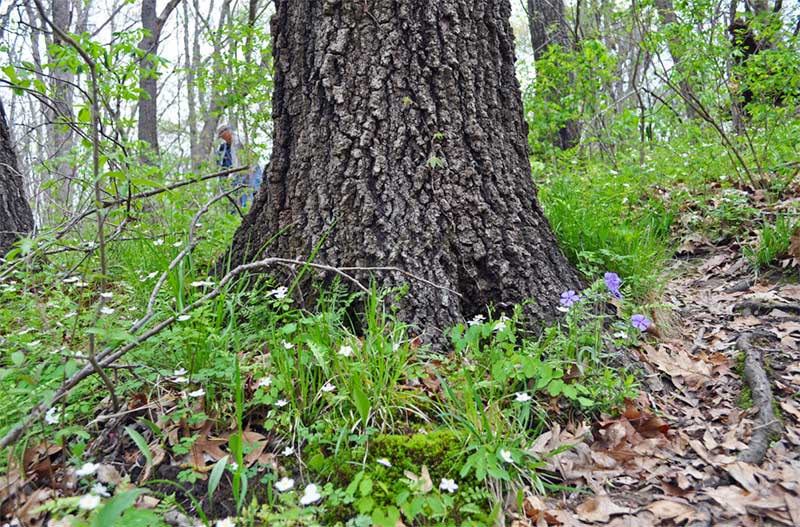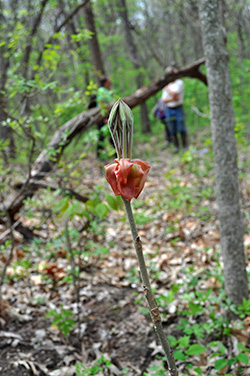Public tour of KU Field Station's Baldwin Woods site set for April 28

LAWRENCE – The Kansas Biological Survey at the University of Kansas will host a public tour of the KU Field Station's Baldwin Woods site from 10 a.m. to noon Saturday, April 28. Survey scientists will lead the tour, which will focus on the pristine native oak-hickory forest portion of the site in the Breidenthal Biological Reserve. Visitors should expect to see a range of native wildflowers known as spring ephemerals, such as birdfoot violet, Dutchman's breeches, mayapples and spring beauties. The entire Baldwin Woods area of the Field Station is a long-term research site and is open only by scheduled tour. Scientific studies within the area are done with as little disturbance as possible so as not to damage the sensitive ecosystem.
 Meet on North 500 Road, Douglas County, just east of East 1700 Road, 2 miles south of Vinland. Trails are likely to be muddy; participants should wear appropriate footwear and bring water, a hat and insect repellant. The tour will be canceled if weather is inclement. Please contact Jennifer Delisle with questions. A map is posted on the Facebook event page.
Meet on North 500 Road, Douglas County, just east of East 1700 Road, 2 miles south of Vinland. Trails are likely to be muddy; participants should wear appropriate footwear and bring water, a hat and insect repellant. The tour will be canceled if weather is inclement. Please contact Jennifer Delisle with questions. A map is posted on the Facebook event page.
The entire historic Baldwin Woods area was designated in 1980 as a National Natural Landmark. The KU Field Station preserves 456 contiguous acres of the Baldwin Woods ecosystem in perpetuity; 202 acres were added in 2016 when local landowners, working cooperatively with the Kansas Biological Survey, sold acreage below market value in order to preserve it as part of the KU Field Station. A portion of this area was identified by the Kansas Forest Service as having exceptional conservation value and was chosen as the first Legacy Forest in Kansas by the U.S. Forest Service. The Forest Legacy Program is funded by Congress through the Land and Water Conservation Fund.
The KU Field Station is managed by the Kansas Biological Survey, a KU research center. The Biological Survey was established at KU in 1911. It houses a variety of environmental research labs and remote sensing/GIS programs, and it manages the 3,700-acre KU Field Station, a site for study in the sciences, arts and humanities.
Photos: Several species of native wildflowers known collectively as spring ephemerals carpet the forest floor in late April. Credit: Kirsten Bosnak, Kansas Biological Survey.